- Clone
- G8.8 (See other available formats)
- Regulatory Status
- RUO
- Other Names
- CD326, EGP40, MIC18, TROP1, KSA
- Isotype
- Rat IgG2a, κ
- Ave. Rating
- Submit a Review
- Product Citations
- publications
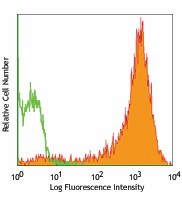
-

TE-71 (mouse thymic epithelial stromal cell line) stained with G8.8 Alexa Fluor® 647 -

Dissected C57/B6 mouse small intestine was immersed in 4% paraformaldehyde (PFA) overnight followed by 30% sucrose immersion overnight and frozen in OCT. Frozen section was blocked with 5% FBS and 5% mouse serum for 30 minutes at room temperature. Then the tissue section was stained with 2.5 µg/mL of anti-mouse Tubulin Beta 3 (clone AA10) Alexa Fluor® 488 (green) and 2.5 µg/mL of anti-mouse CD326 (clone G8.8) Alexa Fluor® 647 (red) overnight at 4°C. Nuclei were counterstained with DAPI (blue). The image was captured by 10X objective. -

Paraformaldehyde-fixed (4%), 500 μm-thick mouse thymus tissue section was processed according to the Ce3DTM Tissue Clearing Kit protocol (cat. no. 427701). The section was costained with anti-mouse CD3 Antibody (clone 17A2) Alexa Fluor® 594 at 5 µg/mL (green), and anti-mouse CD326 (Ep-CAM) Antibody (clone G8.8) Alexa Fluor® 647 at 5 µg/mL (magenta). The section was then optically cleared and mounted in a sample chamber. The image was captured with a 10X objective using Zeiss 780 confocal microscope and processed by Imaris image analysis software.
Watch the video. -

Confocal image of C57BL/6 mouse lung sample acquired using the IBEX method of highly multiplexed antibody-based imaging: EpCAM (blue) in Cycle 2, MHCII (magenta) in Cycle 2, and CD169 (green) in Cycle 4. Tissues were prepared using ~1% (vol/vol) formaldehyde and a detergent. Following fixation, samples are immersed in 30% (wt/vol) sucrose for cryoprotection. Images are courtesy of Drs. Andrea J. Radtke and Ronald N. Germain of the Center for Advanced Tissue Imaging (CAT-I) in the National Institute of Allergy and Infectious Diseases (NIAID, NIH).
| Cat # | Size | Price | Quantity Check Availability | Save | ||
|---|---|---|---|---|---|---|
| 118211 | 25 µg | 124 CHF | ||||
| 118212 | 100 µg | 265 CHF | ||||
EpCAM (CD326) mediates calcium-independent homophilic cell to cell adhesion. It may also function as a growth factor receptor. It is thought to be involved in maintaining cells in position during proliferation. Expression of EpCAM seems to correlate inversely with the level of E-cadherin (CD324). EpCAM is considered important in tumor biology.
Product DetailsProduct Details
- Verified Reactivity
- Mouse
- Antibody Type
- Monoclonal
- Host Species
- Rat
- Immunogen
- TE-71 thymic epithelial cell line
- Formulation
- Phosphate-buffered solution, pH 7.2, containing 0.09% sodium azide.
- Preparation
- The antibody was purified by affinity chromatography and conjugated with Alexa Fluor® 647 under optimal conditions.
- Concentration
- 0.5 mg/ml
- Storage & Handling
- The CD326 antibody solution should be stored undiluted between 2°C and 8°C, and protected from prolonged exposure to light. Do not freeze.
- Application
-
FC - Quality tested
IHC-F, 3D IHC - VerifiedSB - Reported in the literature, not verified in house
- Recommended Usage
-
Each lot of this antibody is quality control tested by immunofluorescent staining with flow cytometric analysis. For flow cytometric staining, the suggested use of this reagent is ≤ 0.25 µg per 106 cells in 100 µl volume. For immunohistochemistry on frozen tissue sections, a concentration range of 2.5 - 5.0 µg/ml is suggested. For 3D immunohistochemistry on formalin-fixed tissues, a concentration of 5.0 µg/mL is suggested. It is recommended that the reagent be titrated for optimal performance for each application.
* Alexa Fluor® 647 has a maximum emission of 668 nm when it is excited at 633nm / 635nm.
Alexa Fluor® and Pacific Blue™ are trademarks of Life Technologies Corporation.
View full statement regarding label licenses - Excitation Laser
-
Red Laser (633 nm)
- Application Notes
-
Additional reported applications for clone G8.8 (for the relevant formats) include: immunohistochemistry of frozen sections: acetone fixed1, with or without OCT embedding2,4, and spatial biology (IBEX)13,14.
- Additional Product Notes
-
Iterative Bleaching Extended multi-pleXity (IBEX) is a fluorescent imaging technique capable of highly-multiplexed spatial analysis. The method relies on cyclical bleaching of panels of fluorescent antibodies in order to image and analyze many markers over multiple cycles of staining, imaging, and, bleaching. It is a community-developed open-access method developed by the Center for Advanced Tissue Imaging (CAT-I) in the National Institute of Allergy and Infectious Diseases (NIAID, NIH).
-
Application References
(PubMed link indicates BioLegend citation) -
- Farr A, et al. 1991. J. Histochem. Cytochem. 39:645. (FC, IHC)
- Dooley J, et al. 2005. J. Immunol. 175:4331. (FC, IHC)
- Hinterberger M, et. al. 2010. Nat. Immunol. 11:512. (FC) PubMed
- Gracz AD, et al. 2010. Am J. Physiol Gastrointest Liver Physiol. 298:590. (IHC) PubMed
- Nudel I, et al. 2011. J. Immunol. 186:891. PubMed
- Morimoto H, et al. 2012. Biol Reprod. 86:148. PubMed
- Ishii K, et al. 2012. Development. 139:1734. PubMed
- Takehashi M, et al. 2012. Biol Reprod. 86:178. PubMed
- Murakami R, et al. 2013. PLoS One. 8:73270. PubMed
- Taguchi K, et al. 2014. Mol Cell Biol. 34:900. PubMed
- Hirokawa Y, et al. 2014. Am J Physiol Gastrointerest Liver Physiol. 306:547. PubMed
- Ding X, et al. 2015. Cancer Res. 75:330. PubMed
- Radtke AJ, et al. 2020. Proc Natl Acad Sci U S A. 117:33455-65. (SB) PubMed
- Radtke AJ, et al. 2022. Nat Protoc. 17:378-401. (SB) PubMed
- Product Citations
-
- RRID
-
AB_1134104 (BioLegend Cat. No. 118211)
AB_1134104 (BioLegend Cat. No. 118212)
Antigen Details
- Structure
- 40 kD single-pass type 1 glycoprotein. 293 amino acids, with a 21 aa signal peptide, a 246 aa extracellular domain, a 21 aa transmembrane domain, and a 26 aa cytoplasmic domain. The extracellular domain contains two epidermal growth factor-like repeats.
- Distribution
-
Expressed on majority of epithelial cell membranes with the exception of adult squamous cells of the skin and a few specific epithelial cell types.
- Function
- Mediates calcium-independent homophilic cell-cell adhesion.
- Interaction
- CD326 displays hemophilic binding.
- Ligand/Receptor
- CD305 (LAIR-1), CD306 (LAIR-2), and Ep-CAM.
- Cell Type
- Embryonic Stem Cells, Epithelial cells
- Biology Area
- Immunology, Stem Cells
- Molecular Family
- Adhesion Molecules, CD Molecules
- Antigen References
-
1. Borkowski TA, et al. 1996. Eur. J. Immunol. 26:110.
2. Bergsagel PL, et al. 1992. J. Immunol. 148:590. - Gene ID
- 17075 View all products for this Gene ID
- Specificity (DOES NOT SHOW ON TDS):
- CD326
- Specificity Alt (DOES NOT SHOW ON TDS):
- CD326
- App Abbreviation (DOES NOT SHOW ON TDS):
- FC,IHC-F,3D IHC,SB
- UniProt
- View information about CD326 on UniProt.org
Related Pages & Pathways
Pages
Related FAQs
- If an antibody clone has been previously successfully used in IBEX in one fluorescent format, will other antibody formats work as well?
-
It’s likely that other fluorophore conjugates to the same antibody clone will also be compatible with IBEX using the same sample fixation procedure. Ultimately a directly conjugated antibody’s utility in fluorescent imaging and IBEX may be specific to the sample and microscope being used in the experiment. Some antibody clone conjugates may perform better than others due to performance differences in non-specific binding, fluorophore brightness, and other biochemical properties unique to that conjugate.
- Will antibodies my lab is already using for fluorescent or chromogenic IHC work in IBEX?
-
Fundamentally, IBEX as a technique that works much in the same way as single antibody panels or single marker IF/IHC. If you’re already successfully using an antibody clone on a sample of interest, it is likely that clone will have utility in IBEX. It is expected some optimization and testing of different antibody fluorophore conjugates will be required to find a suitable format; however, legacy microscopy techniques like chromogenic IHC on fixed or frozen tissue is an excellent place to start looking for useful antibodies.
- Are other fluorophores compatible with IBEX?
-
Over 18 fluorescent formats have been screened for use in IBEX, however, it is likely that other fluorophores are able to be rapidly bleached in IBEX. If a fluorophore format is already suitable for your imaging platform it can be tested for compatibility in IBEX.
- The same antibody works in one tissue type but not another. What is happening?
-
Differences in tissue properties may impact both the ability of an antibody to bind its target specifically and impact the ability of a specific fluorophore conjugate to overcome the background fluorescent signal in a given tissue. Secondary stains, as well as testing multiple fluorescent conjugates of the same clone, may help to troubleshoot challenging targets or tissues. Using a reference control tissue may also give confidence in the specificity of your staining.
- How can I be sure the staining I’m seeing in my tissue is real?
-
In general, best practices for validating an antibody in traditional chromogenic or fluorescent IHC are applicable to IBEX. Please reference the Nature Methods review on antibody based multiplexed imaging for resources on validating antibodies for IBEX.
Other Formats
View All CD326 Reagents Request Custom ConjugationCustomers Also Purchased
Compare Data Across All Formats
This data display is provided for general comparisons between formats.
Your actual data may vary due to variations in samples, target cells, instruments and their settings, staining conditions, and other factors.
If you need assistance with selecting the best format contact our expert technical support team.
-
APC anti-mouse CD326 (Ep-CAM)
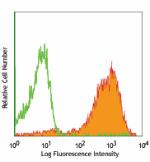
TE-71 (mouse thymic epithelial stromal cell line) stained wi... -
Purified anti-mouse CD326 (Ep-CAM)
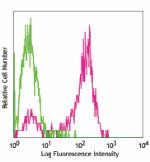
TE-71 cell line stained with G8.8 purified, followed by anti... -
Biotin anti-mouse CD326 (Ep-CAM)
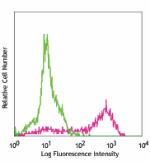
Mouse thymic epithelial stromal cell line TE-71 stained with... -
PE anti-mouse CD326 (Ep-CAM)
_Antibody_1_FC_100416.jpg&Width=150&altFmImage_path=&Crop=5)
TE-71 (mouse thymic epithelial stromal cell line) cells were... -
FITC anti-mouse CD326 (Ep-CAM)
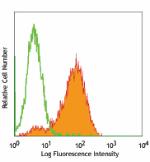
TE-71 (mouse thymic epithelial stromal cell line) stained wi... -
Alexa Fluor® 488 anti-mouse CD326 (Ep-CAM)
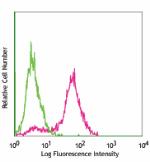
TE-71, mouse thymic epithelial stromal cell line, stained wi... 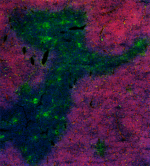
C57BL/6 mouse frozen thymus section was fixed with 4% parafo... 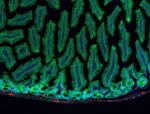
Dissected C57/B6 mouse stomach was immersed in 4% paraforma... 
Paraformaldehyde-fixed (4%), 500 μm-thick mouse lung section... -
Alexa Fluor® 647 anti-mouse CD326 (Ep-CAM)

TE-71 (mouse thymic epithelial stromal cell line) stained wi... 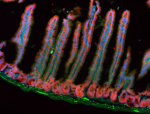
Dissected C57/B6 mouse small intestine was immersed in 4% p... 
Paraformaldehyde-fixed (4%), 500 μm-thick mouse thymus tissu... 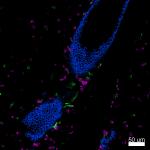
Confocal image of C57BL/6 mouse lung sample acquired using t... -
PE/Cyanine7 anti-mouse CD326 (Ep-CAM)
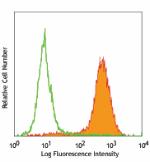
TE-71 (mouse thymic epithelial stromal cell line) stained wi... -
APC/Cyanine7 anti-mouse CD326 (Ep-CAM)
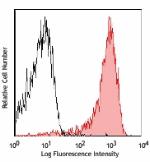
Mouse thymic epithelial stromal cell line TE-71 stained with... -
PerCP/Cyanine5.5 anti-mouse CD326 (Ep-CAM)
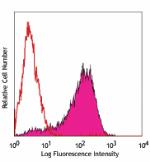
Mouse thymic epithelial stromal cell line (TE-71) stained wi... -
Alexa Fluor® 594 anti-mouse CD326 (Ep-CAM)
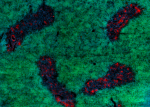
C57BL/6 mouse frozen thymus section was fixed with 4% parafo... 
C57BL/6 mouse frozen kidney section was fixed with 4% parafo... 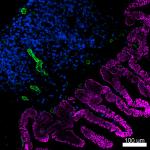
Confocal image of C57BL/6 mouse small intestine sample acqui... 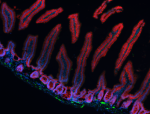
Dissected C57/B6 mouse small intestine was immersed in 4% p... Formalin-fixed, 300 micron-thick mouse large intestine secti... 
Paraformaldehyde-fixed (4%), 500 μm-thick mouse kidney tissu... -
Brilliant Violet 421™ anti-mouse CD326 (Ep-CAM)

TE-71 (mouse thymic epithelial stromal cell line) was staine... -
Brilliant Violet 605™ anti-mouse CD326 (Ep-CAM)
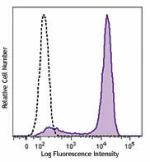
TE-71 (mouse thymic epithelial stromal cell line) was staine... -
Purified anti-mouse CD326 (Ep-CAM) (Maxpar® Ready)
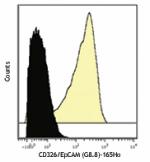
Mouse TE-71 (top) or Chinese Hamster Ovary (CHO) (bottom) ce... -
APC/Fire™ 750 anti-mouse CD326 (Ep-CAM)
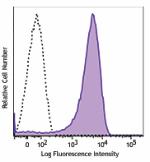
TE-71 (mouse thymic epithelial stromal cell line) cells were... -
Brilliant Violet 711™ anti-mouse CD326 (Ep-CAM)
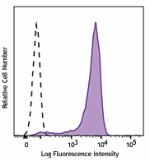
TE-71 (mouse thymic epithelial stromal cell line) cells were... -
Brilliant Violet 510™ anti-mouse CD326 (Ep-CAM)
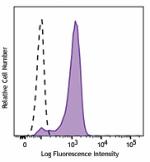
TE-71 (mouse thymic epithelial stromal cell line) cells were... -
PE/Dazzle™ 594 anti-mouse CD326 (Ep-CAM)
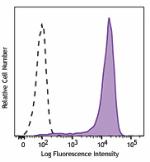
TE-71 (mouse thymic epithelial stromal cell line) cells were... -
TotalSeq™-A0449 anti-mouse CD326 (Ep-CAM)
-
Alexa Fluor® 700 anti-mouse CD326 (Ep-CAM)
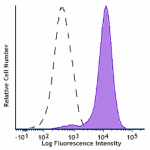
TE-71 (mouse thymic epithelial stromal cell line) was staine... -
TotalSeq™-C0449 anti-mouse CD326 (Ep-CAM)
-
Brilliant Violet 785™ anti-mouse CD326 (Ep-CAM)
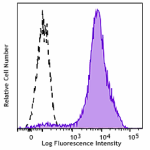
TE-71 (mouse thymic epithelial stromal cell line) was staine... -
TotalSeq™-B0449 anti-mouse CD326 (Ep-CAM)
-
Brilliant Violet 650™ anti-mouse CD326 (Ep-CAM)
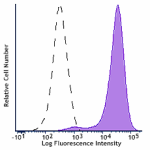
TE-71 (mouse thymic epithelial stromal cell line) was staine... -
PE/Cyanine5 anti-mouse CD326 (Ep-CAM)
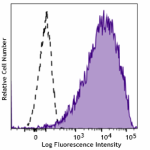
4T1 (a mouse triple negative breast cancer cell line) cells ... -
Spark Red™ 718 anti-mouse CD326 (Ep-CAM) (Flexi-Fluor™)
-
Spark Blue™ 574 anti-mouse CD326 (Ep-CAM) (Flexi-Fluor™)
-
Spark Blue™ 550 anti-mouse CD326 (Ep-CAM) (Flexi-Fluor™)
 Login / Register
Login / Register 










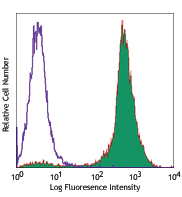
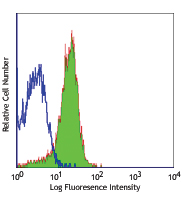
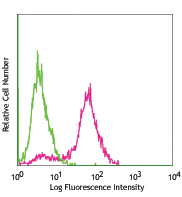
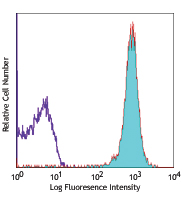
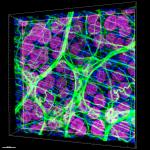



Follow Us